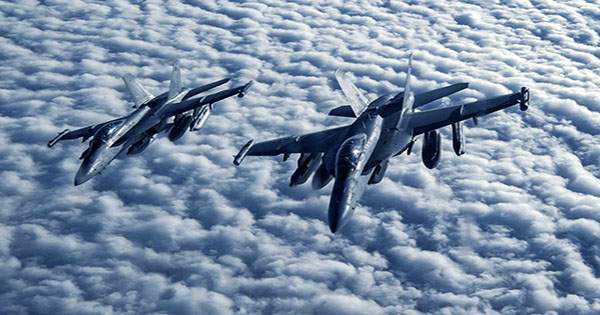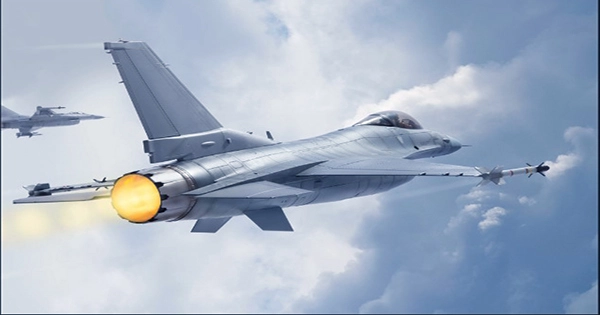The majority of the fuselage and wings have been put together, and the first prototype of the TF-X, also known as the Milli Muharip Ucak (MMU, or National Combat Aircraft) in Turkey, is currently being assembled in Ankara. The horizontal stabilizers, outward-canted tail fins, and twin engines are all still conspicuously absent. Although the cockpit canopy is visible in place, the avionics and ejection seat have not yet been fitted. The video was captured on November 21, according to a placard fastened to the jet’s spine, when representatives of the Turkish Defense Ministry, Defense-Industrial Agency, and Turkish Air Force paid the production line an official visit.
The TF-X has a wingspan of 39 feet and an overall length of 60 feet, making it significantly larger than the F-35 Joint Strike Fighter but slightly smaller than the U.S. Air Force’s F-22 Raptor.
According to reports, the prototype is expected to be released on March 18, 2023. At least if the aircraft is to be brought out in its finished configuration, this looks ambitious.

The TF-schedule X’s has generally slipped a little. TUSAS President & CEO Temel Kotil stated that the prototype would have its first flight in 2025 when the fighter’s full-size mockup was presented at the Paris Air Show in 2019. At the same time, it was anticipated that the first samples from production will start seeing use as early as 2028.
Now, the first flight is anticipated to occur in 2025 or 2026, and the Turkish Air Force should begin receiving the first production units in the early 2030s.
In order to create a domestic fifth-generation combat aircraft, the TF-X program was first introduced in December 2010. It was always intended to have certain stealth qualities, cutting-edge avionics, and a high level of performance.
The TF-X is not anticipated to be as stealthy as aircraft like the F-22 or F-35, for instance.
The new aircraft’s conceptual design work was done between 2011 and 2013, and the full-scale development phase started in 2016.
However, the Turkish Air Force’s need for a fifth-generation fighter was not as pressing when the TF-X was first developed.
Turkey was planning to purchase 100 F-35As as a Level 3 partner in the Joint Strike Fighter program, with more of the short takeoff and vertical landing (STOVL) F-35B variant likely going to the Turkish Navy.
But in 2019, Turkey was expelled from the Joint Strike Fighter program because it refused to give up its ambitions to buy Russian S-400 (SA-21 Growler) air defense systems, which the US believed posed a serious security danger. Additionally, the nation played a significant role in the production of F-35 parts, a task that is now being phased out.
The TF-X program becomes even more crucial as a result of the cancellation of its intended F-35s, but it also presents new difficulties. Turkey chose the Broader Electric F110 series of afterburning turbofans to power the fighter, especially the F110-GE-129 or F110-GE-132, but it seemed like a more distant possibility for a long due to the general deterioration in U.S.-Turkish ties. The partnership has recently begun to show signs of growth, and there has even been talking of selling some F-16s.
In its favor, the F110 has previously been built in Turkey under license, and Turkish F-16C/Ds are powered by its -100 and -129 variants. Although logistical and upkeep requirements would be lessened, there is still no assurance that the United States will fund the delivery of this engine for the TF-X.
Should it happen, other engine choices might include Rolls-Royce, which was first passed up in favor of GE as the TF-X powerplant supplier. However, there have also been disputes over the transfer of sensitive technology and intellectual property rights between Turkey and the UK.
Purchasing a Russian engine has been mentioned in the past, but it is currently an extremely remote possibility due to the ongoing conflict in Ukraine, associated sanctions, and Moscow’s exclusion from the international community. In the interim, Turkey has positioned itself as one of Ukraine’s top armament suppliers.
Last but not least, there is the possibility of a locally-made engine, which has previously been suggested for the TF-X. However, given the time required to develop such a powerplant, it is unlikely to be available before 2038.
The Turkish Air Force will consist of around 240 F-16C/D Fighting Falcons, which make up the majority of the combat fleet, but this new reality has forced a reevaluation. It was once intended that the F-35A would first replace the outdated F-4E-2020 Terminator aircraft before being deployed to brand-new fighter squadrons. As a result, the TF-X would have taken the position of the F-16s.
Turkey has sought methods to make better use of the F-16 fleet after the F-35 was abruptly removed from the picture. In addition to plans to purchase 40 new F-16 Block 70/72 planes and kits to convert an additional 80 of its existing F-16C/Ds to the same standard, this has included a domestic mid-life update program. The Bayraktar Kizilelma drone, which is claimed as the nation’s first unmanned fighter aircraft but hasn’t flown yet, would be another alternative to address fighters,’ albeit in the long run.
While more F-16s would act as a stopgap until the TF-X can be fielded in large numbers, there is no guarantee that such a deal will be implemented given the tense relationship between Ankara and Washington. Once more, it appears that the success of the TF-X will have a significant impact on the Turkish Air Force’s future.
Along with the engine query, there is also the concern about how expensive the TF-X program will be. Creating a new fighter, whether stealthy or not, is a labor-intensive and expensive process, especially when a nation decides to go it alone. It’s possible that Turkey needs a financial boost from exports to keep the TF-X development on track. However, there are rivals out there, including the F-35 and other alternatives from China and South Korea.
As things stand, Turkey’s need for new fighter aircraft will only increase. It is still unclear if the TF-X program will be able to fulfill that criteria, particularly given the still-ambitious schedule that has been established.
🇹🇷🇹🇷 #NEW
— Dr. Ali BAKIR (علي باكير) (@AliBakeer) November 23, 2022
✅ #Turkey‘s indigenous 5th generation TF-X fighter jet is on the final assembly line.
✅ It is set to leave the hanger for the first time on March 18, 2023.
✅ #TFX expected to be in service in 2030 to replace fighter jets acquired from the #US. pic.twitter.com/wtc9j7JJBT
















